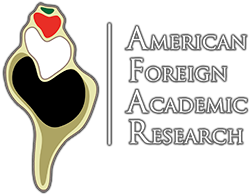An Interview with Founder and Executive Director, Mat Saunders…
Mat Saunders, the hands-on fearless leader of AFAR, pictured here in Spain.
Since AFAR’s inception, Mat has been the driving force behind the organization – forging connections with archaeologists, finding donors, and building a program to take 60-70 pre-collegiate students to four international archaeological sites this upcoming summer. We asked Mat to give us insight into AFAR.
What originally drove your interest in archaeology?
At an early age, I was exposed to the world of discovery and archaeology by my Uncle Russ. Uncle Russ’s home was filed with archaeology and anthropology books as well as National Geographic and Archaeology Magazine. He nurtured my interest – creating backyard dig sites and taking me to lecturers. When it came time to choose my vocation, I opted to attend the University of Kentucky where I focused my studies on New World Archaeology.
As you think back on your time on excavations, what "find" do you feel is the most impressive?
My favorite "find" was the transitional stairs between the northern portion of Plaza C and Plaza B at Cahal Pech in Belize. It might not seem as glamorous as some of the shiny pretty things that I've found but the fact that so many people from varied social classes walked across those stairs a thousand times and I was the first person to see them for who knows how long was special. I had personally walked across that area dozens if not hundreds of times and I had no idea what that liminal space looked like.
What do you hope students take away from their experiences with AFAR?
Every student is different and I understand that value lies in different spaces for different kids. At a minimum, I hope students come away from our projects with an appreciation for other cultures both modern and ancient and a sense of value and confidence in doing work outside the classroom. After seeing the results of two weeks of hard work, our students have a sense of accomplishment and pride in contributing to something tangible that will be appreciated for generations to come.
AFAR is continuing to grow. What do you see as the future of the organization?
I would love to see our current programs continue to thrive and grow in the areas of participants, season length, and site preservation. I would also love to continue to reach out to underserved populations of top tier students and grow our partnerships with the academic archaeology community. I would also like to see our scholarship programs and publications grow in size and quality.
To get the most out of AFAR, what do students need to bring to the table?
I know that it's been said before, but a good work ethic and attitude are critical. I always say that I can work with a student who isn't very productive but not one who is counterproductive. Our best students are excited to be in the field and eager to have the opportunity to take advantage of the extremely rare opportunity we provide. With a great attitude, everything else falls into place.
Briefly - what do you find is most interesting about each of the current sites?
People often ask which site I like the most and without hesitation, I can say that I love them all the most but for different reasons. To begin, I love our partners at each site and working with them is what I value the most.
Belize - I'm just as at home in Belize as I am at home, so it will always be a place I look forward to working. Having worked at Cahal Pech for over fifteen years gives it a special place in my heart. Being most knowledgeable on Maya archaeology provides a level of comfort for me.
Spain - I'm learning the ropes on the other three sites, which is equally exciting - especially since I get to train on unique techniques from local experts. The castle of Zorita is probably the site that I find the most freedom in exploring. Its walls have many secrets and stories as yet untold. For this reason, I often find myself dreaming of being in its excavation units.
Greece - Mieza is rife with potential because of the site's unrivaled historical significance. I have gotten lost in thought over how Mieza's current state of exploration compares with that of Cahal Pech thirty years ago and my mind swims.
Portugal - Troia is absolutely gorgeous and working with a site so important to the Roman Empire gives me chills. As the son of a steel worker, I have a connection with a factory setting and Tróia is exactly that. It is also quite amazing to take notes with the breathtaking Sado Estuary in the background!


